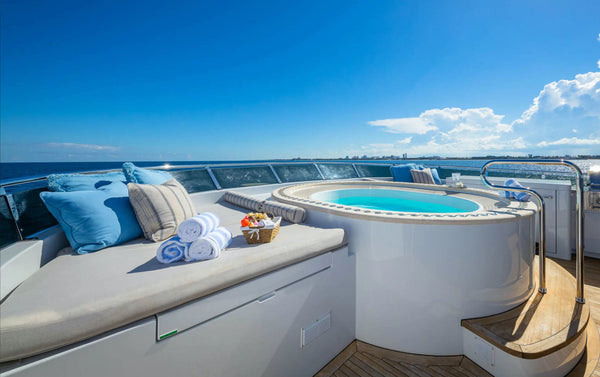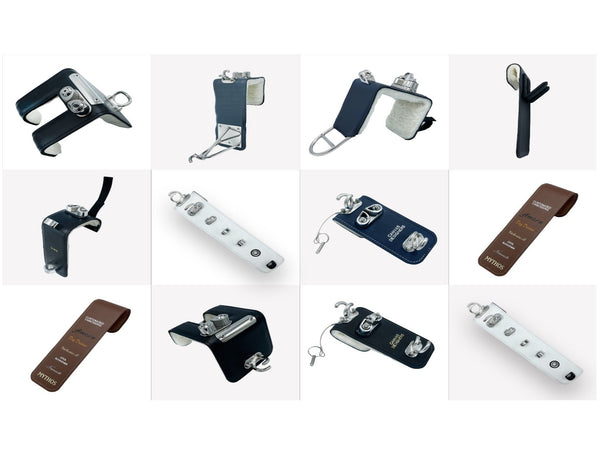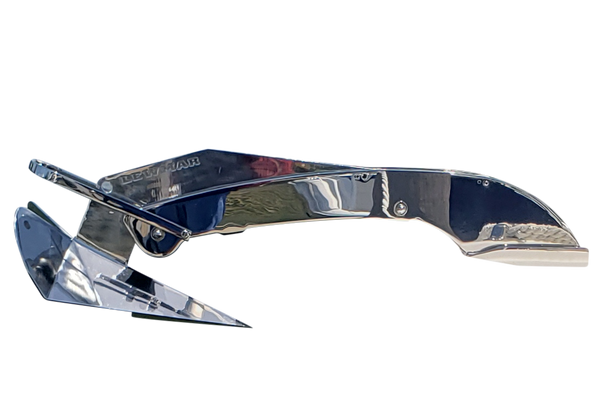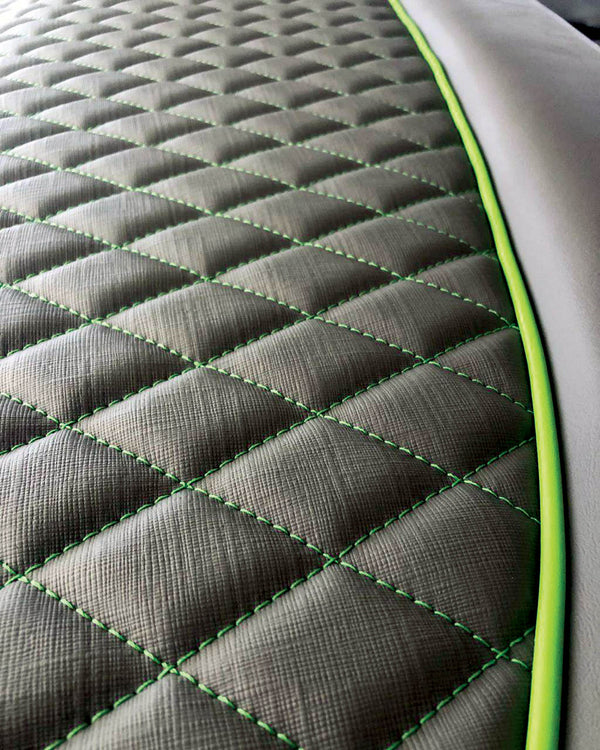
Canvas Upholstery Hacks: Tips for Cleaning and Maintenance
Introduction
Canvas upholstery is a popular choice for various applications, from furniture to boat projects. With its durability and practical benefits, it's no wonder that many individuals opt for this material. What makes canvas upholstery stand out?
Sunbrella fabrics allow mariners to personalize their boats with coordinated patterns and consistent colors across collections. Whether an experienced captain or a novice, the Sunbrella Marine Upholstery Collection empowers you to create a vessel that mirrors your lifestyle and individuality.
With nearly 60 years of history, Sunbrella marine canvas fabrics are renowned for their ultimate UV protection, fade resistance, mold and mildew resistance, and ease of cleaning. Trusted by boat enthusiasts, marine boat manufacturers, and fabricators worldwide, Sunbrella fabrics ensure durability and longevity, making them the preferred choice for marine applications.
- Durability: Marine canvas fabric is tightly woven for ultimate strength and longevity.
- Cleaning and Maintenance: Canvas upholstery is relatively easy to clean and maintain, ensuring your pieces look fresh for longer.
- Stain Resistance: Canvas possesses inherent stain-resistant properties that can save you from bothersome spill incidents.
- Style Options: The versatility of canvas allows for a wide range of colors and patterns, suiting diverse design schemes.
- Boat Project Suitability: With its water-resistance property, canvas is an ideal choice for marine environments.
This article aims to delve deep into these aspects of canvas upholstery. It will equip you with essential cleaning and maintenance tips, understanding of its durability, insights into its style versatility, and advice on how it can be optimally used for boat projects. Get ready to explore the world of canvas upholstery and learn how to make the most out of your pieces. By the time you finish reading this article, you'll have a comprehensive understanding of the benefits of opting for canvas upholstery and how to maintain its resilience effectively.
Understanding the Durability of Marine Canvas Upholstery
When discussing how long canvas upholstery lasts, it's important to remember that its strength comes from its material and weave. Canvas is usually made from cotton or linen and has a tight weave, which makes it strong and durable.
Here are some key factors that contribute to the durability of canvas upholstery:
- Tight Weave: The close-knit pattern of a canvas fabric's weave significantly influences its endurance. This design minimizes the potential for tears and punctures, effectively barricading against daily wear and tear.
- Resistance: Canvas is naturally predisposed to withstand various stressors like abrasions and moisture. Its ability to repel water makes it an excellent choice for environments where spills are common.
- Breathability: Despite its robustness, canvas retains breathability, which prevents the buildup of mildew and odors that could otherwise deteriorate the fabric over time.
Why Choose Canvas Upholstery?
Compared to other upholstery materials like synthetic fabrics or leather, canvas has its own advantages:
- Toughness: Canvas is known for being tough and able to handle everyday use without showing signs of wear as quickly as other materials.
- Cost-effectiveness: Canvas upholstery tends to be more affordable than leather or high-end synthetic fabrics, making it a budget-friendly option for furniture or boat seating.
- Versatility: While leather may surpass in terms of texture and aging, it requires more intensive care and comes with a higher price tag. Synthetics offer versatility in textures but often fall short in breathability and environmental friendliness.
By considering these factors, you can make an informed decision when choosing canvas upholstery for your furniture or boat seating. It offers a good balance between durability and cost, ensuring that your investment will last while still looking stylish.
1. Cleaning Canvas Upholstery: Essential Maintenance Guide
Regular cleaning is not just about aesthetics; it's critical for the longevity of canvas upholstery. Dirt and oils can break down the fibers over time, leading to premature wear and tear. To keep your canvas looking its best and functioning for years to come, follow this effective cleaning process:
Step-by-Step Outdoor Upholstery Cleaning Guide
Hand Washing Removable Fabric:
Prepare a solution of 1/4 cup mild soap per gallon of lukewarm water.
Soak the fabric in the solution and lightly agitate the stain with a sponge or soft bristle brush.
Rinse thoroughly to remove all soap residue and allow the fabric to air dry.
Machine Washing Removable Fabric:
Close all zippers on removable casings.
Machine wash in cold water on the delicate cycle with mild laundry detergent.
For severe mold or mildew, add 1 cup of bleach.
Allow the fabric to air dry after washing.
Indoor Upholstery Cleaning Guide
Spot Cleaning:
Apply a light mist of mild soap and water using a spray bottle, or use Sunbrella Clean Multi-Purpose Fabric Cleaner.
Alternatively, you can use an upholstery cleaner such as 303® Multi-Surface Cleaner.
Gently work the solution into the stain by lightly agitating the entire surface area of the fabric, moving from seam to seam, with a sponge or very soft bristle brush. Avoid scrubbing and do not use a hard-bristled brush or anything that may abrade the fabric.
Rinse the fabric thoroughly to remove all soap residue.
Blot excess moisture with a clean, soft towel or sponge.
Blot or wet-vacuum excess water from the entire surface area of the fabric, moving from seam to seam.
Air dry. Repeat rinsing and blotting until all soap residue is removed.
Machine Washing (Removable Casings):
Close all zippers on removable casings.
Machine wash in cold water on the delicate cycle with normal amounts of mild laundry detergent.
Allow the fabric to air dry after washing.
For Stubborn Oil-Based Stains:
If a stubborn oil-based stain persists after cleaning, use Sunbrella Extract™ Oil Based Stain Remover or treat with a strong degreaser.
Rinse thoroughly after treatment.
Note: Consult the furniture manufacturer before removing the casing, as cushion construction may vary.
Cleaning Non-Removable Fabric:
Prepare a solution of 1/4 cup mild soap per gallon of lukewarm water.
Use a soft bristle brush to clean the fabric, allowing the cleaning solution to soak in.
Rinse thoroughly and air dry the fabric.
For Upholstered Pieces:
Clean the entire surface area of the fabric, from seam to seam, instead of rubbing in circular motions.
Use an extractor if necessary to avoid water rings and residue.
For Tough Stains:
Use Sunbrella Clean Multi-Purpose Fabric Cleaner or 303® Multi-Surface Cleaner.
For oil-based stains, try Sunbrella Extract™ Oil Based Stain Remover or a strong degreaser.
Mold and Mildew Removal:
Prepare a solution of 1 cup bleach and 1/4 cup mild soap per gallon of water.
Spray the solution on the affected area and let it soak for 15 minutes.
Clean the area with a sponge, towel, or soft bristle brush.
Rinse thoroughly and air dry.
For severe mold/mildew growth, increase bleach quantities.
Preventing Stains
To mitigate staining:
- Apply a fabric protector spray that's safe for canvas after each deep cleaning session.
- Keep dyed fabrics and newspapers away from wet canvas, as these can cause color transfer stains.
By integrating these maintenance tips for canvas upholstery into your routine, you preserve both the appearance and integrity of your furnishings or boat projects.
2. Protecting Strategies: Maintaining the Resilience of Canvas Upholstery
Canvas upholstery is not only praised for its aesthetic versatility but also for its robust built-in defenses, capable of withstanding a variety of environmental factors and everyday wear and tear. Recognizing and maintaining these protective qualities is key to ensuring your canvas upholstery remains in prime condition for years to come.
Stain Resistance
Canvas fabrics are often treated with a stain-resistant finish that repels liquids and prevents spills from setting into the fabric. To uphold this feature, promptly address spills by blotting with a clean, dry cloth and avoid using harsh chemicals that could degrade the protective coating.
Water Resistance
Water resistance is another hallmark of quality canvas upholstery, especially useful in outdoor settings or humid environments. Preserve this attribute by cleaning with mild soap and water and ensuring the fabric dries completely to prevent mold or mildew formation.
Abrasion Resistance
The tight weave of canvas provides excellent abrasion resistance, meaning it can endure frequent use without showing signs of wear. Minimize direct friction by rotating cushions and employing throw pillows or blankets to absorb contact.
Pilling Resistance
Pilling can detract from the visual appeal of upholstery; however, canvas's tightly woven structure naturally resists pilling. If pilling occurs, a fabric shaver can safely restore the smooth surface without damaging the integrity of the material.
By understanding these protective features inherent in canvas upholstery, you equip yourself with the knowledge to care for your furniture correctly. With routine maintenance that respects these characteristics, your canvas pieces will continue to offer both comfort and style.
3. Versatility in Style: Enhancing Your Décor with Canvas Upholstery
Canvas upholstery is not just durable; it is also a popular choice in the world of interior design. You can choose from a wide range of fabric colors to match any room's color scheme or create the atmosphere you desire. Whether you want to add a splash of color or keep things subtle, canvas has got you covered.
Exploring a Wide Spectrum of Fabric Colors for Diverse Design Schemes
From bright and bold shades to soft and neutral hues, canvas upholstery offers endless possibilities for customizing your space.
Embracing Different Styles and Patterns, from Classic to Contemporary
One of the great things about canvas is its versatility. It can easily adapt to different design styles, making it suitable for both traditional and modern settings.
When it comes to combining durability with style, Sunbrella fabric is a standout choice. Here's why:
- Ultimate Durability and Fade Resistance: Sunbrella fabric ensures that your upholstery can withstand everyday wear and tear as well as exposure to sunlight without losing its color.
For those who appreciate subtle details, the pinstriped effect in canvas upholstery offers an elegant touch:
- The Timeless Elegance of Pinstriped Effect in Canvas Upholstery: This understated design can add sophistication to your furniture, blending seamlessly with various interior themes.
If you're looking to create a more dramatic look, Canvas Twilight is a popular option:
- A Dark Beauty: Introducing Canvas Twilight, a Navy Delight with Grey Undertones: This deep, dark fabric color creates a striking contrast with lighter accents or complements darker decor palettes.
By choosing canvas upholstery, you bring together durability and style, ensuring that your furniture not only lasts but also enhances the overall beauty of your space.
Canvas Upholstery for Boat Projects: Combining Style with Functionality
When it comes to boat upholstery, the choice of fabric plays an essential role in both aesthetic appeal and practical functionality. Canvas upholstery stands out as a preferred option due to its durability, versatility, and resilience in marine environments.
Key considerations when choosing and using canvas upholstery for boat projects include:
- Resistance to Water and Mildew: Canvas is naturally water-resistant, making it ideal for boat upholstery. Its tight weave prevents water seepage, while treated canvas offers additional mildew resistance, a critical feature in humid marine conditions.
- UV Resistance: Boats are exposed to the harsh rays of the sun. Canvas upholstery designed to resist UV radiation helps prevent fading and maintains the fabric’s vibrancy over time.
- Durability: The high traffic on boats demands a durable fabric. Canvas, with its robust weave, withstands wear and tear, providing longevity to your boat's interior.
- Ease of Cleaning: Spills and stains are inevitable on boats. Opting for canvas allows easy cleaning due to its stain-resistant properties.
- Design Flexibility: From classic nautical stripes to contemporary patterns, canvas offers endless design possibilities. This versatility ensures that your boat's interior matches your personal style while staying functional.
Choosing the right boat upholstery fabric is essential for creating a comfortable, stylish, and resilient marine environment. Canvas upholstery successfully blends these qualities, making it an excellent choice for boat projects.
Conclusion
Canvas upholstery is a popular choice for both professional designers and DIY enthusiasts due to its durability and versatility. Its tight weave and strong construction make it resistant to everyday wear and tear, while also providing endless possibilities for design.
Here are some key advantages of canvas:
- Durability: It holds up well over time, ensuring that your furniture will last.
- Versatility: With a wide range of colors and patterns available, canvas can fit into any decor style.
Now that you have learned how to clean and maintain your canvas upholstery, you can keep it looking its best. Remember these tips:
- Establish a regular cleaning routine.
- Take steps to prevent stains.
- Use gentle and safe cleaning products.
Don't be afraid to get creative with your canvas upholstery! Use it as an opportunity to express your personal style in your home or boat interior. Whether you prefer subtle pinstripes or bold prints, let your canvas upholstery reflect who you are.
I hope this guide has inspired you and given you the confidence to take on future projects involving canvas upholstery. Enjoy the process of creating something unique and sustainable for your space!









